Margilan is a town in the Fergana Valley that borders Kyrgyzstan and Tajikistan in the south-eastern corner of Uzbekistan. Although it’s often listed as a highlight of the country because of its links to the silk trade, it actually felt well off the tourist trail – probably because it is in the opposite direction from Tashkent to other big-hitting sights such as Samarkand.
The journey involved taking a 7-hour train from Tashkent. Although it was an afternoon train, we were in a sleeper compartment because this was only one part of the train’s much longer route across Uzbekistan. We felt fortunate that we did the journey in the daytime, as the views across the border to the snow-capped mountains in Tajikistan were stunning.
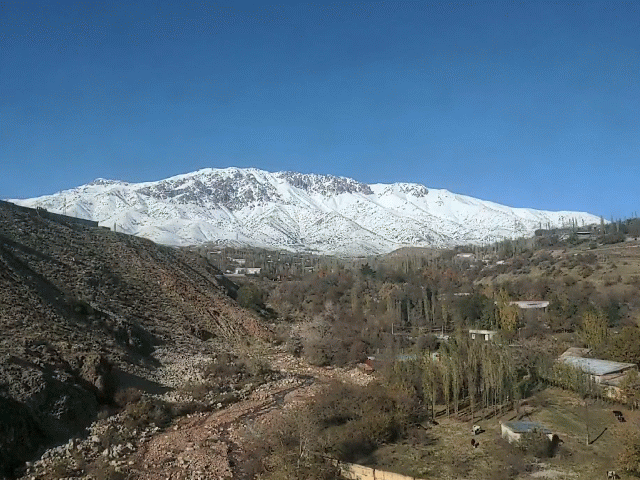
Unfortunately, we didn’t have the best journey because our compartment-mates weren’t exactly welcoming. They had already commandeered one of our beds before we arrived (we never got this back) and at one point they banished Oli from where he was sitting (on our other bed) because they wanted to eat lunch at the table. He was so taken aback that he actually moved for them! There were other things, too, but maybe I won’t get started….
We’re pretty sure that they felt able to behave like this because they were older than us; respect for elders, particularly men (eye roll 🙄), is very important in Uzbekistan. We’ve seen lots of deferential behaviour on buses, but we didn’t realise that the expectation would extend to us not being able to sit in our booked seats! Or perhaps they just thought we were pushovers – who knows? Either way, it was another thing to add to the growing list of frustrations in Uzbekistan. On a happier note, we played an excellent round of Public Transit Roulette on the local marshrutkas when we arrived in Margilan, so things were looking up!


We had one full day in town and our main aim was to explore the Kumtepa Bazaar, 5 km out of town. As far as we understood, this ran every day, but was particularly buzzing with sellers of locally-produced silk on Thursdays and Sundays. Much like in Tashkent, the bazaar was arranged into zones, but these were even more fascinating. There was a whole zone dedicated to sewing machines and overlockers (Oli had to hold me back) and an area for used car parts and all sorts of unidentified (to us, at least) mechanical paraphernalia. Sadly, I wasn’t that inspired by the fabrics for sale (I had a very specific idea of what I wanted – which will be no surprise to anyone who knows me well!) but this was probably for the best, given I’d have to carry any purchases for the next few months.
Without a doubt, our favourite part of the bazaar was discovering a BBQ zone, where we had an exceptional lunch.
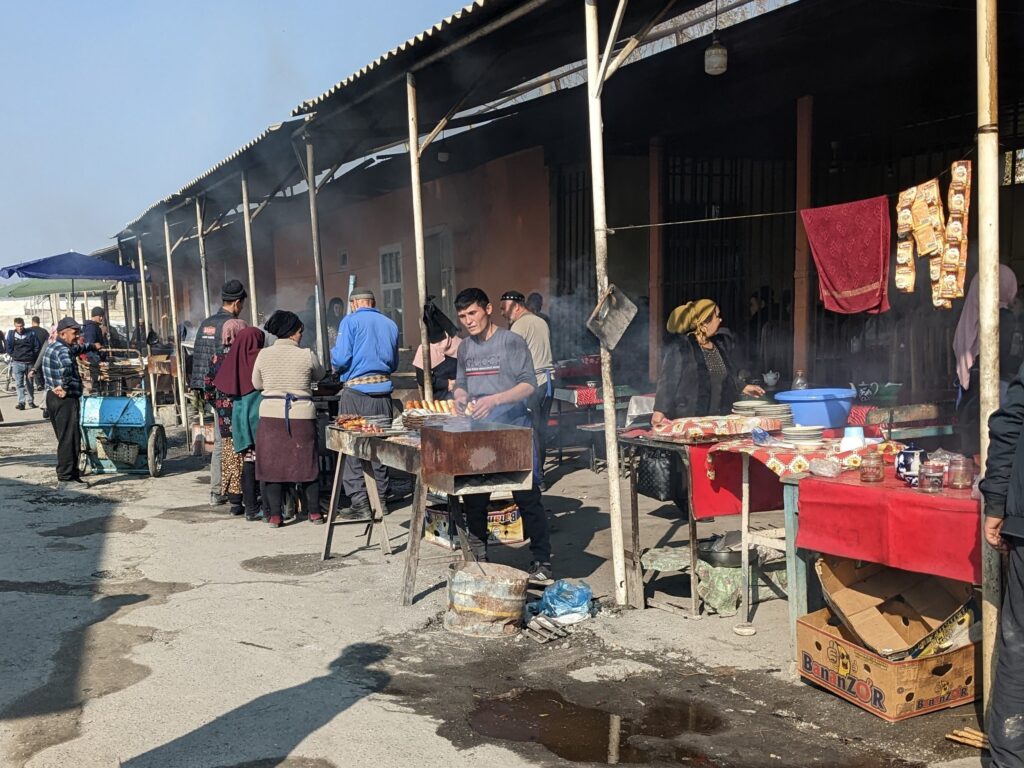
In the Chorsu Bazaar in Tashkent, where we had a similar meal, the staff were at least cooking in rudimentary kitchens (below left), but in Margilan we saw the real deal: even the deep fat fryer was wood-fueled (below right)!


Unsurprisingly, the chefs really knew what they were doing and the food was cooked to perfection – it was such a good demonstration of how simple ingredients combined well can be SO delicious. The chicken was smoky, salty and succulent, with just a hint of cumin, and the slaw was crunchy, tangy and fresh.
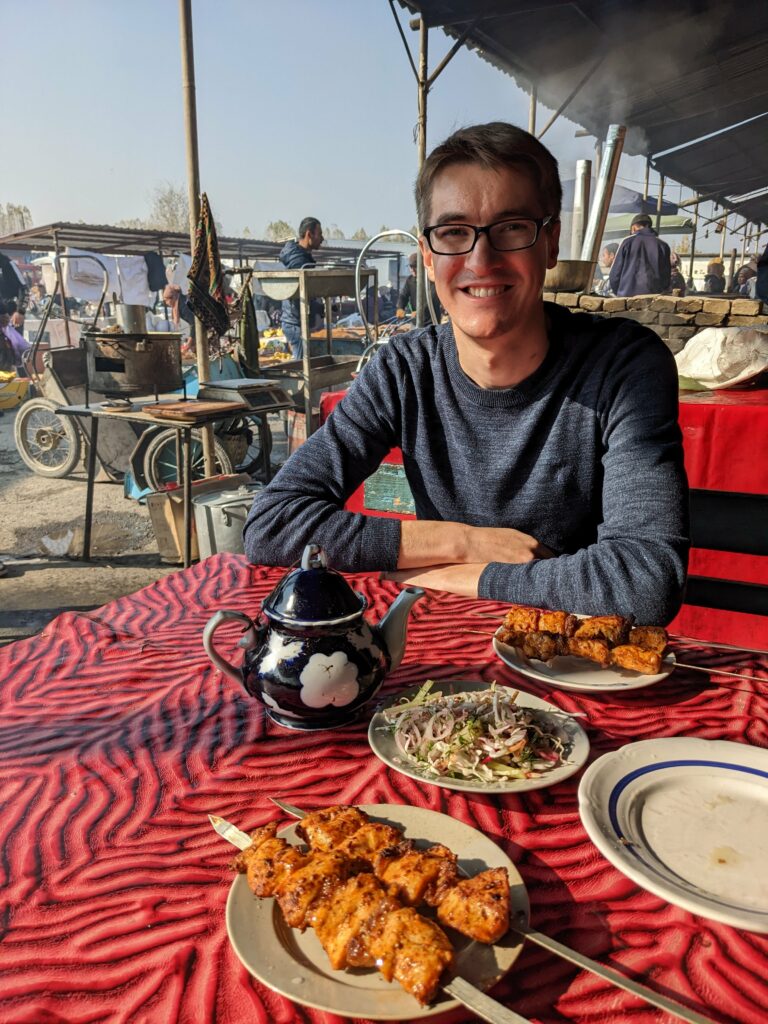
We also couldn’t resist trying what was being churned out from the deep fat fryer as there was a constant queue of people buying up bags of fried snacks. Some Googling after the fact suggested that they were probably baursaki, most associated with Kazakhstan but eaten across Central Asia, and they were savoury, crunchy and very satisfying, much like deep-fried Yorkshire puddings.
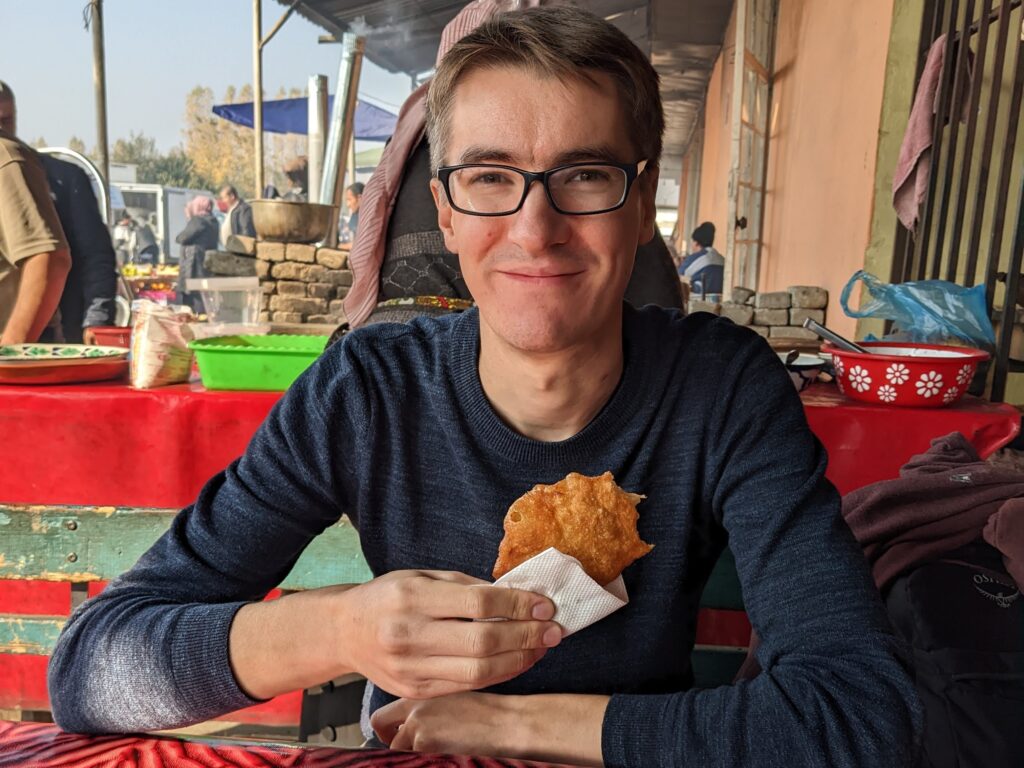
This lunch was a real highlight – other than this, we ate without a doubt the worst run of meals in Margilan that we’ve ever eaten, anywhere! The less said about them the better…
While we were sipping our tea after lunch, two chaps on a neighbouring table beckoned us over, so we joined them for several more cups of tea. Communication was a little tricky, but we gleaned that one of them had worked in Germany for several years. This gave Oli the opportunity to test out his secondary-school German skills, and this may be the first time ever that they have helped, rather than hinder, communication!! The chaps were baffled at the concept that we were married and didn’t have children – by their estimation, we should have had ten by now (this seemed a little ambitious, as we’ve been married for seven years…) Oli was highly amused that I showed them a picture of Thomas when they asked about children!
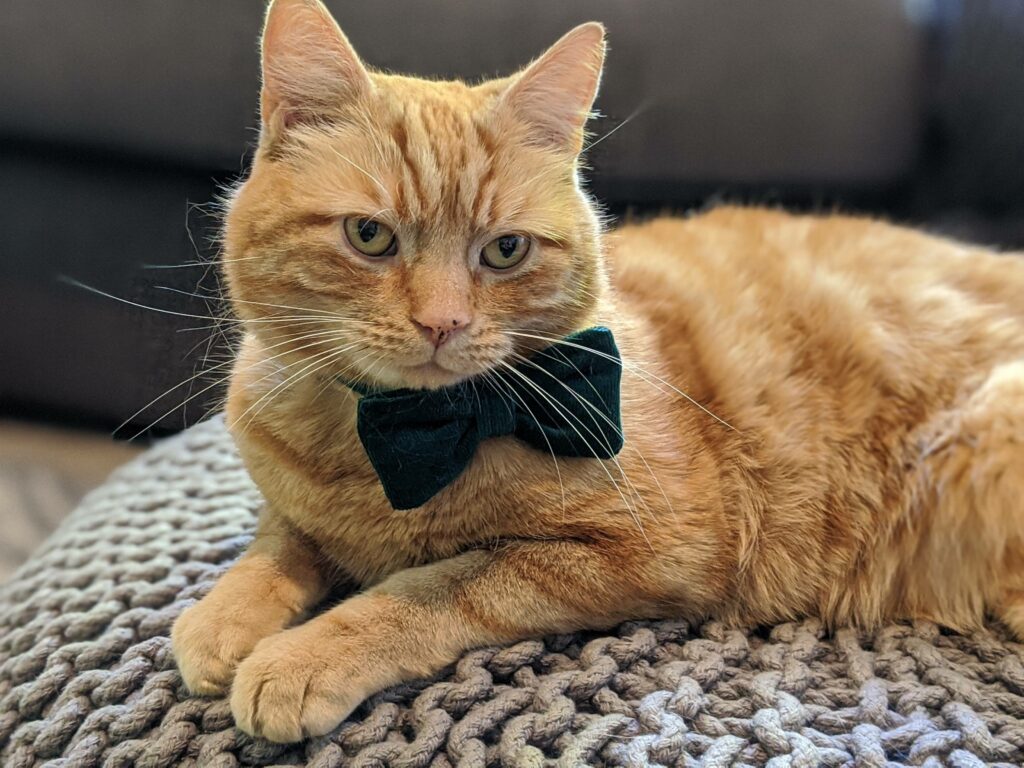
There was an awful lot of gesturing about how I should be producing children, cooking and doing the cleaning. While I understand that they have a very different worldview and so I wasn’t offended as I may have been in another circumstance, I didn’t want to miss the opportunity to question their assumptions about my and Oli’s roles, so I told them that Oli also cooks and cleans. They roared with laughter, but Oli also said that they wouldn’t look him in the eye after this, which I thought was fascinating. We did realise afterwards that perhaps we didn’t make it quite clear enough that in normal circumstances (i.e. when we’re not travelling), I would also be working full time and not sitting idly around the house with no children to care for while Oli earned all the money AND did the cleaning! Oh well.
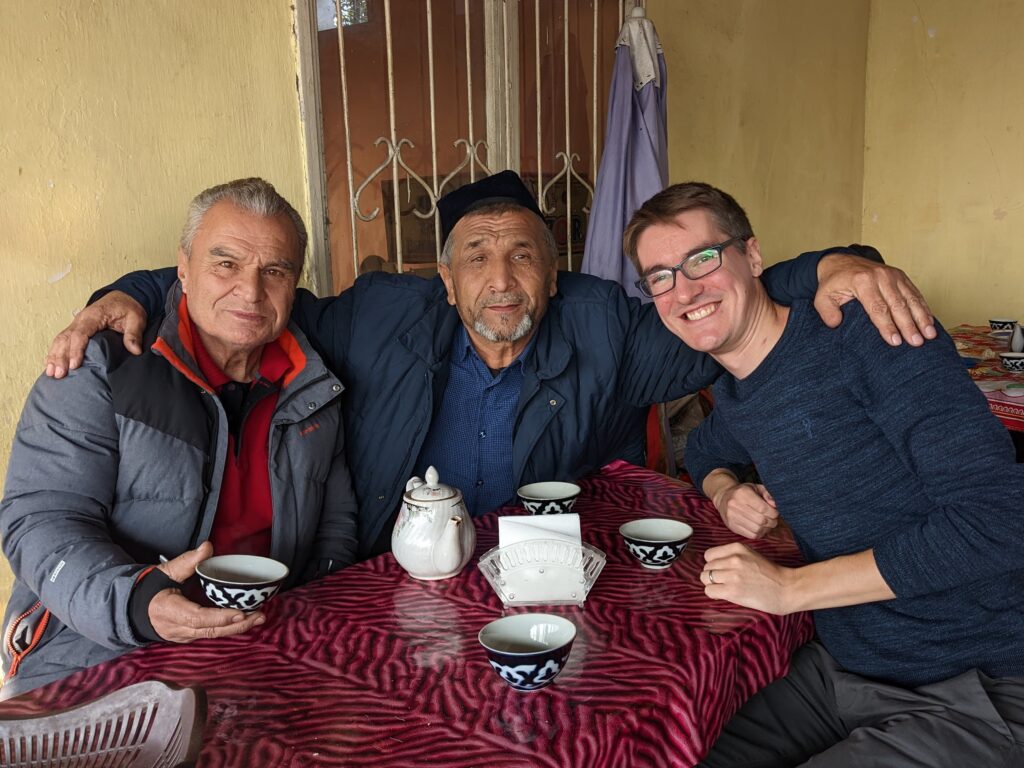
After we said farewell to our new friends, we stopped off at the Yodgorlik Silk Factory. If we had been short of time, we probably would have skipped this because we’d read very mixed accounts of people’s experiences online, but as we were passing we thought we would pop in.
The one thing I did know about Ikat fabric in advance of our visit is that it is yarn-dyed (i.e. the threads are dyed before being woven), and it was really interesting to see how this works in practice to produce a print: the threads are wrapped around a huge frame and hand-sorted to keep the pattern roughly in line. We also saw how the silkworms’ cocoons are unravelled to produce the silk threads, how the dyes are produced from natural materials (such as walnut shells), and how the threads are woven into silk, cotton and blended fabrics on hand and machine looms.
Although it was nice to see the traditional hand-loom method, the machine looms were the real stars of the show – the noise was incredible, even though only two were running in a room of around 18!
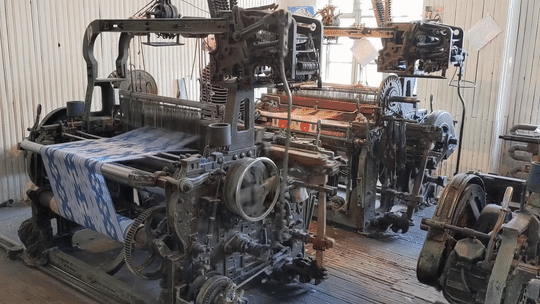
We had mixed feelings about this visit. For a sewing fan like myself, it was cool to see the traditional methods used to produce the fabrics, but it was abundantly clear that the factory was no longer operating at any kind of scale. We strongly suspected that the workers started just as we entered each room and stopped as soon as we left. It felt a bit like being in the Truman Show!
On our return journey to Tashkent the following day, we had a compartment to ourselves and a very relaxed journey. That is, it was very relaxed until the conductor tried to extract a payment from us for keeping our compartment empty (which we didn’t ask him to do – and we’re sure that the seats weren’t booked as the carriage was patently half-empty). In frustrating moments like these, we really had to remind ourselves that we’ve also experienced real kindness from a lot of people in Uzbekistan – like the cafe owner who wouldn’t accept any money for a pot of tea the previous day, or the marshrutka driver who I accidentally rerouted to drop us off directly outside the station entrance that morning, and who did so with a smile and a flourish!


All in all, we were a little relieved to be leaving Uzbekistan the following day. We were just hoping against hope that our paperwork was enough in order that they would actually stamp us out of the country! Spoiler alert: they did, and more on that soon.
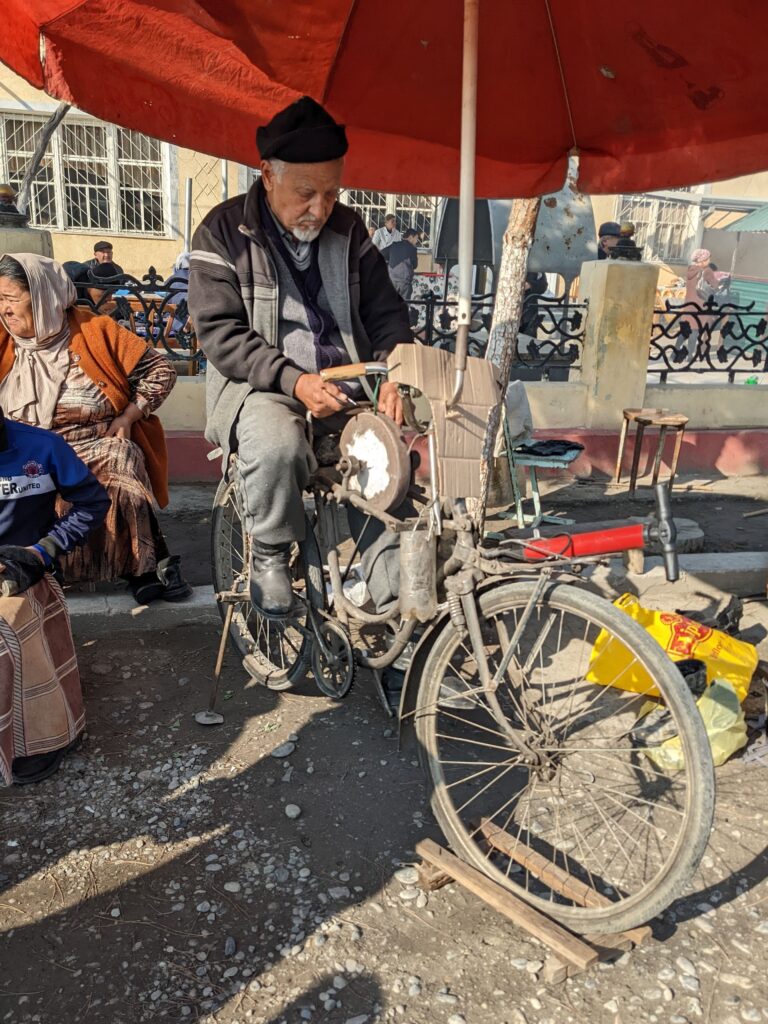
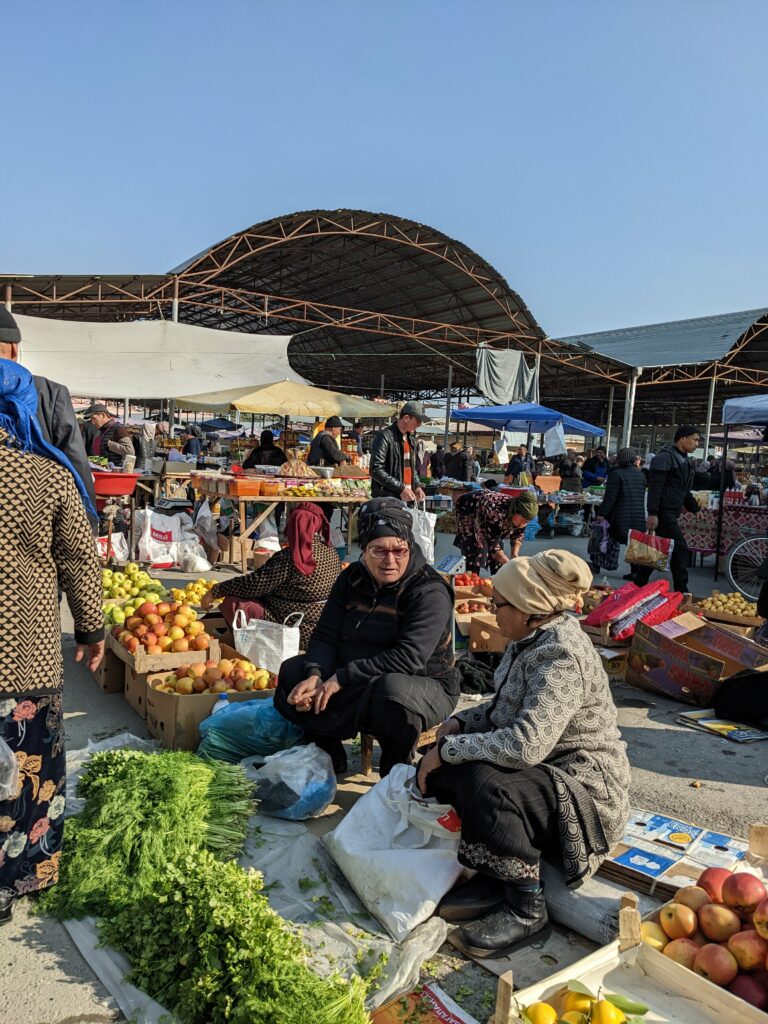
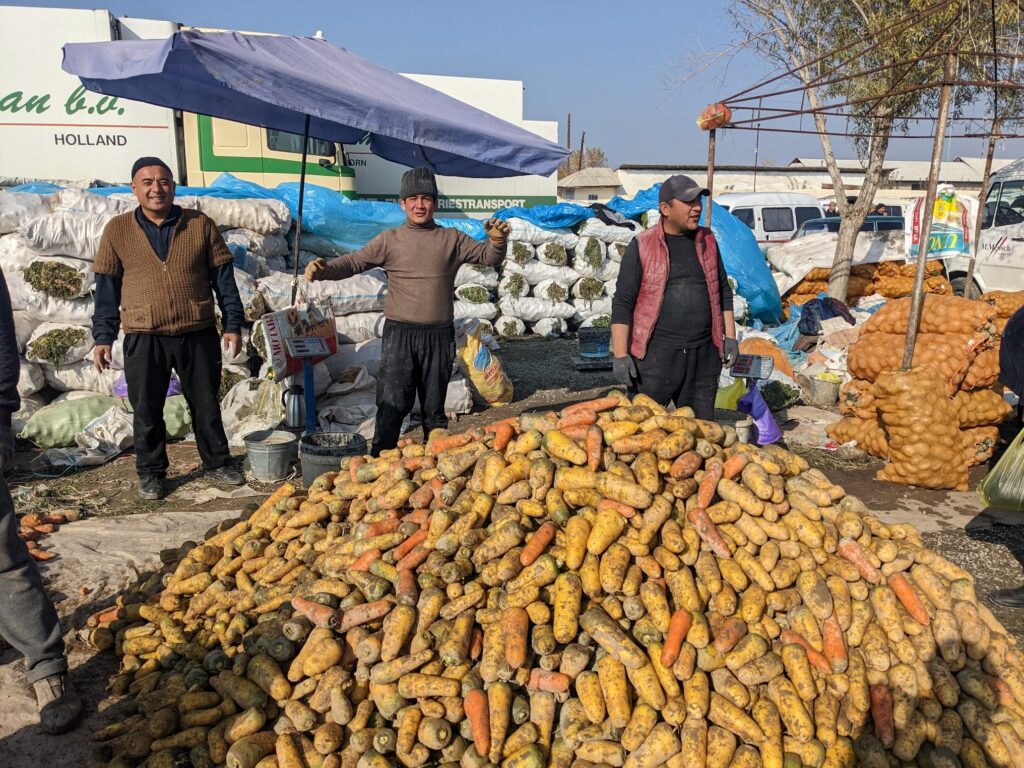
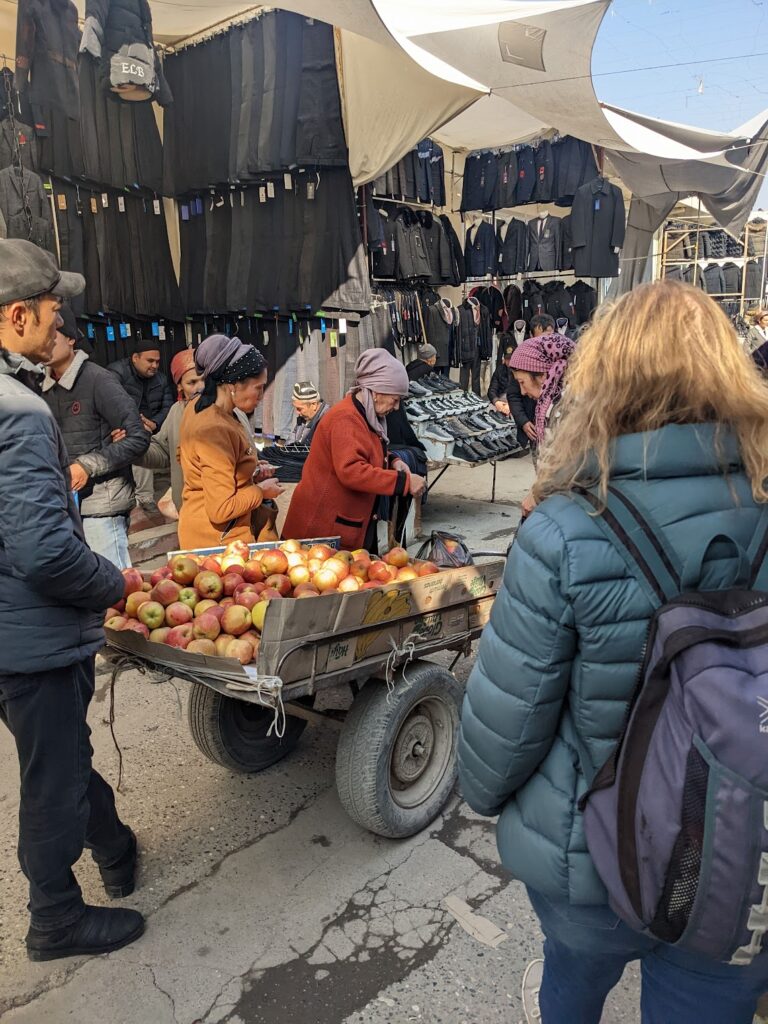
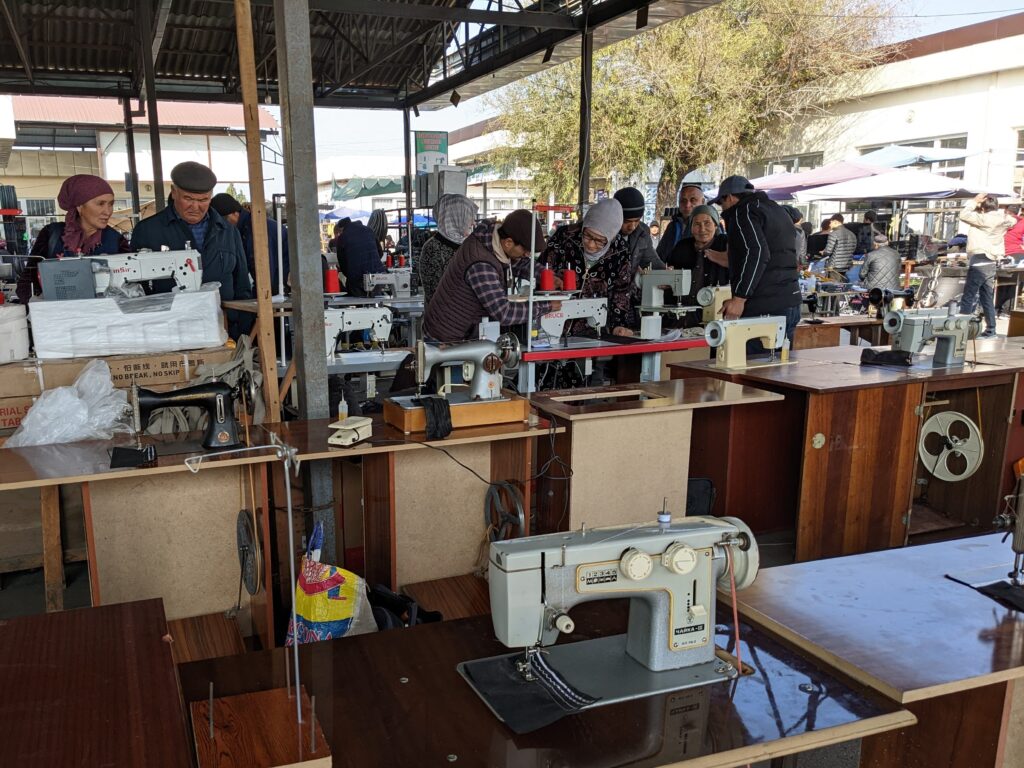
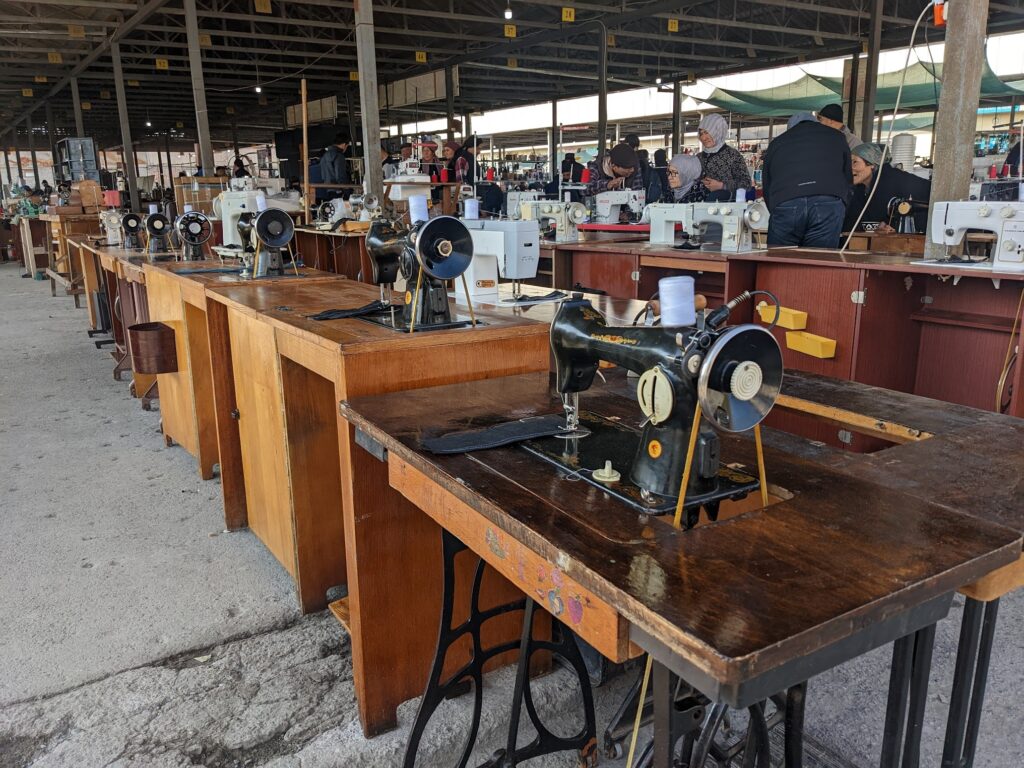
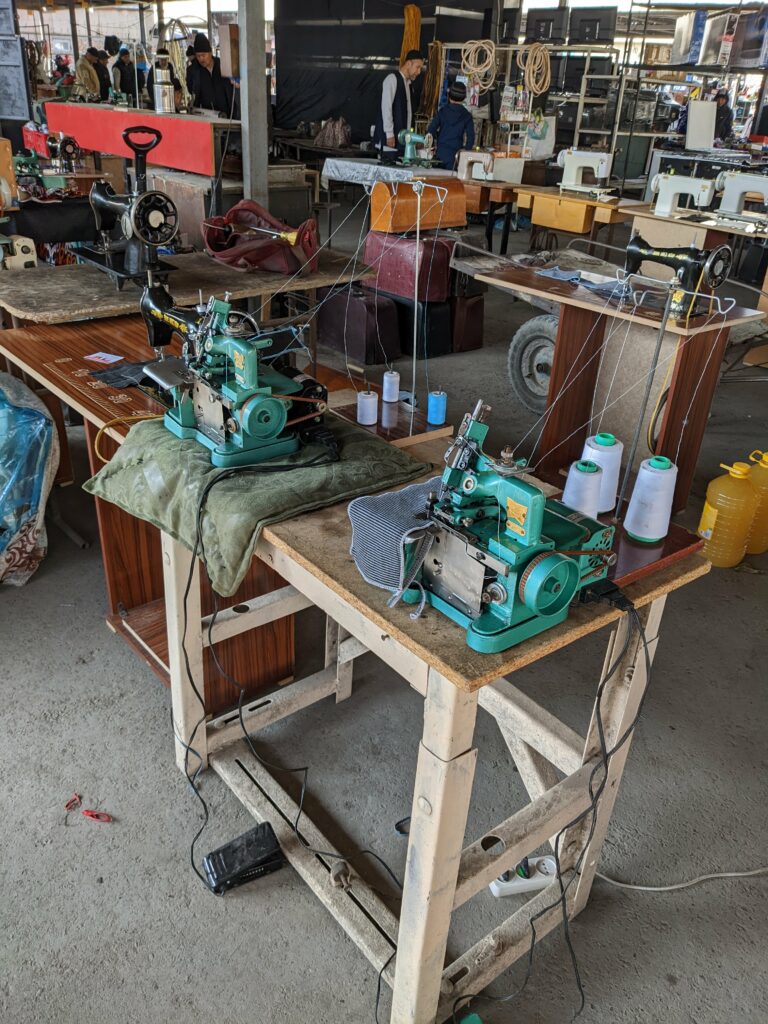
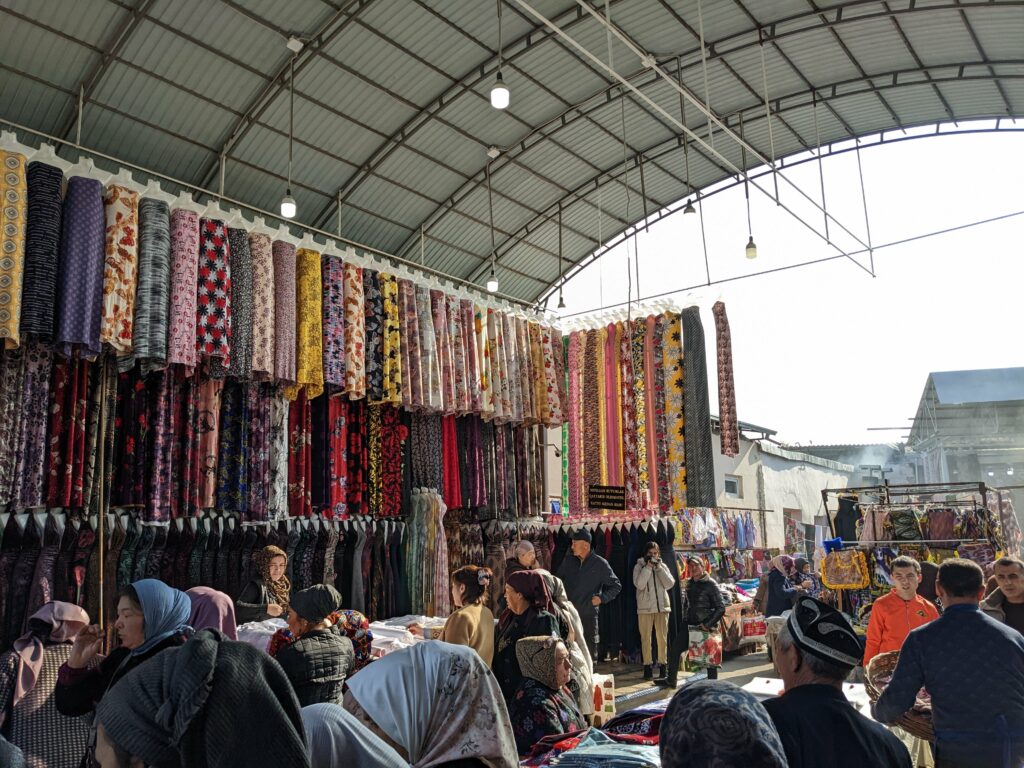
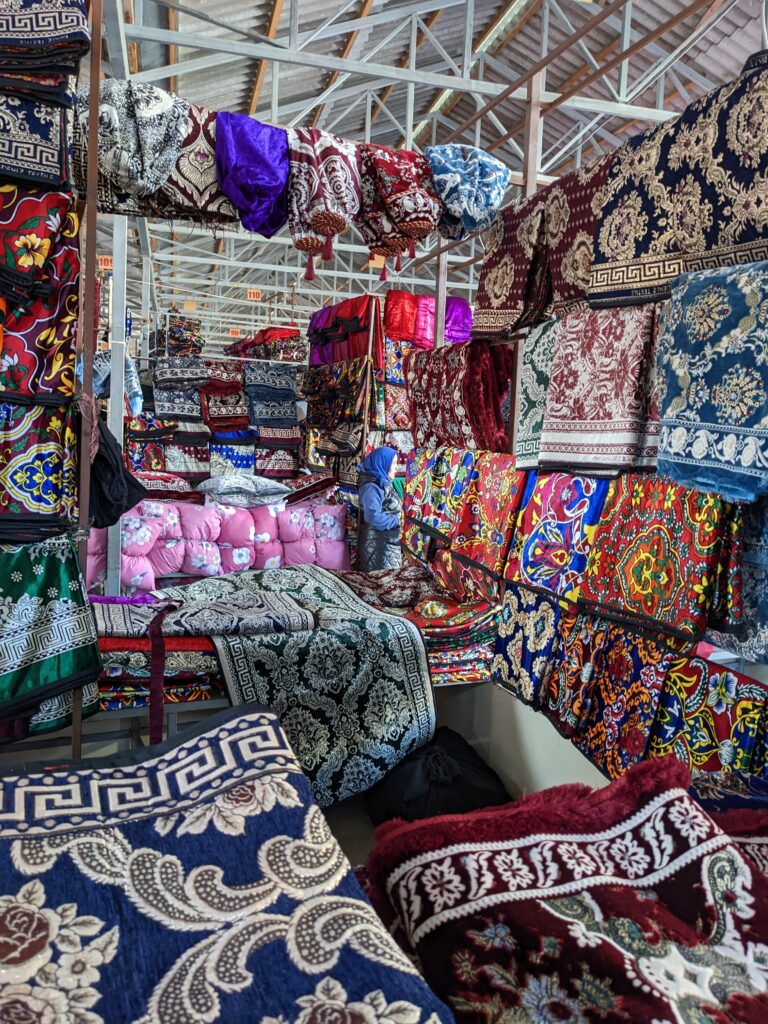
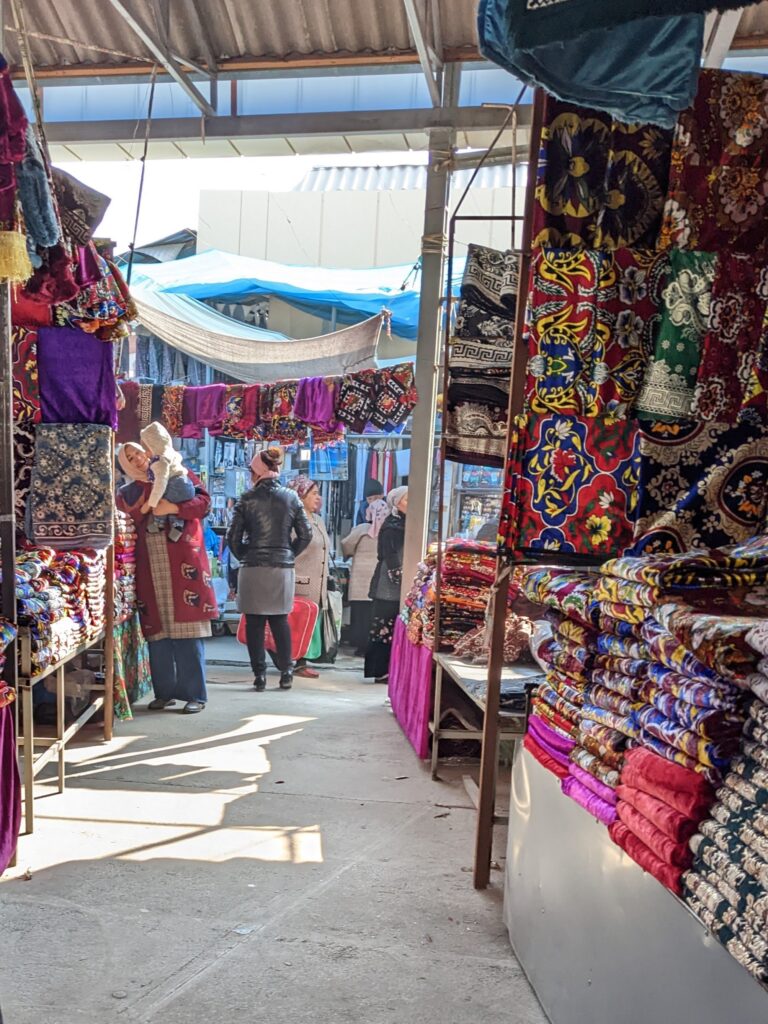
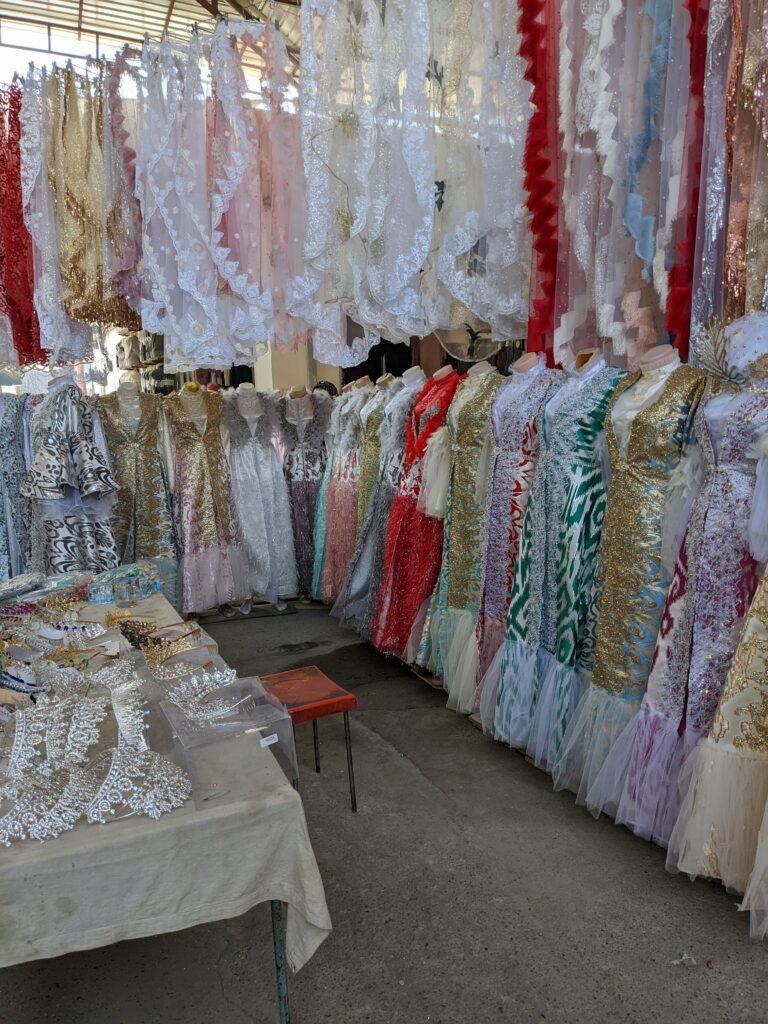

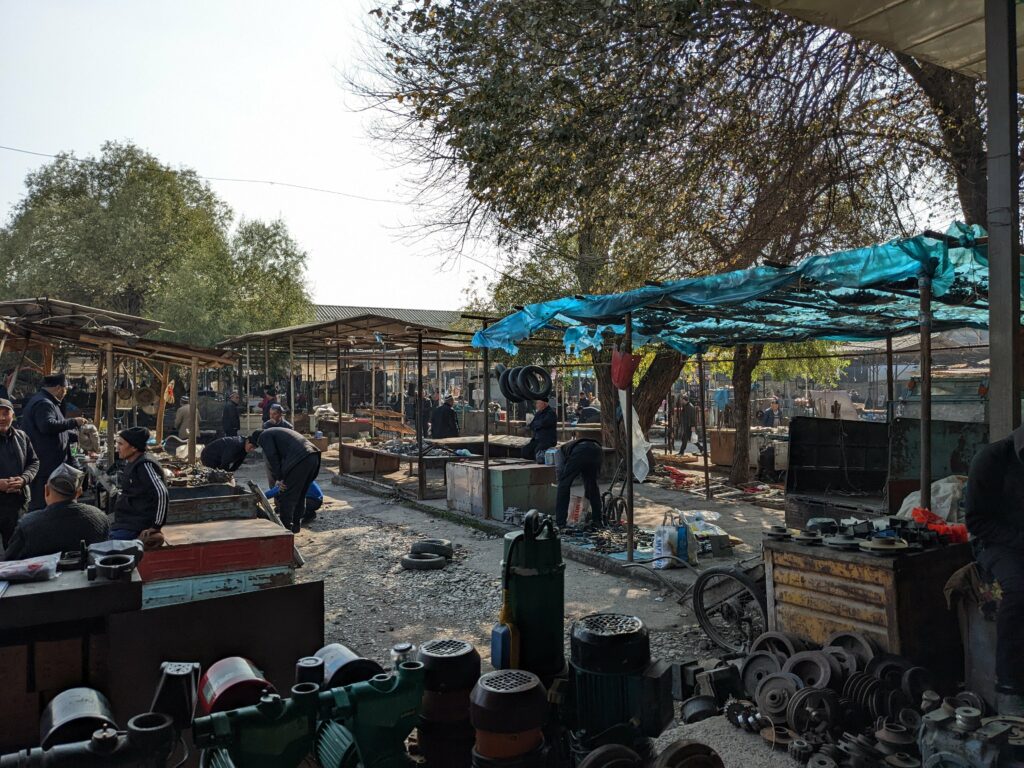
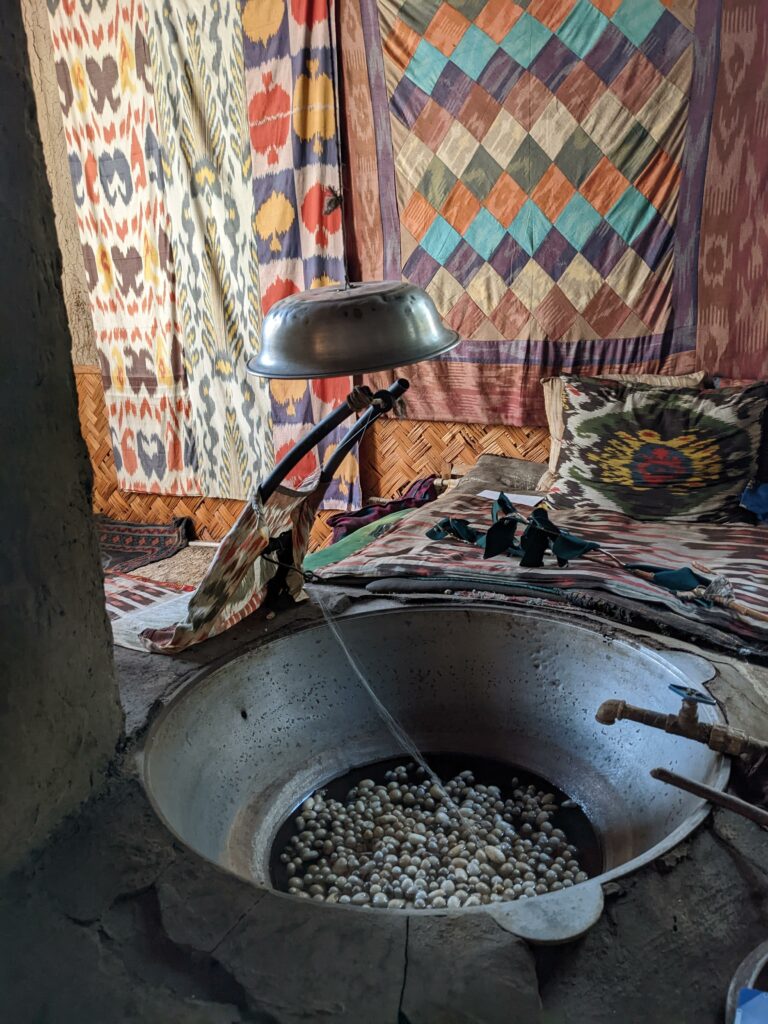
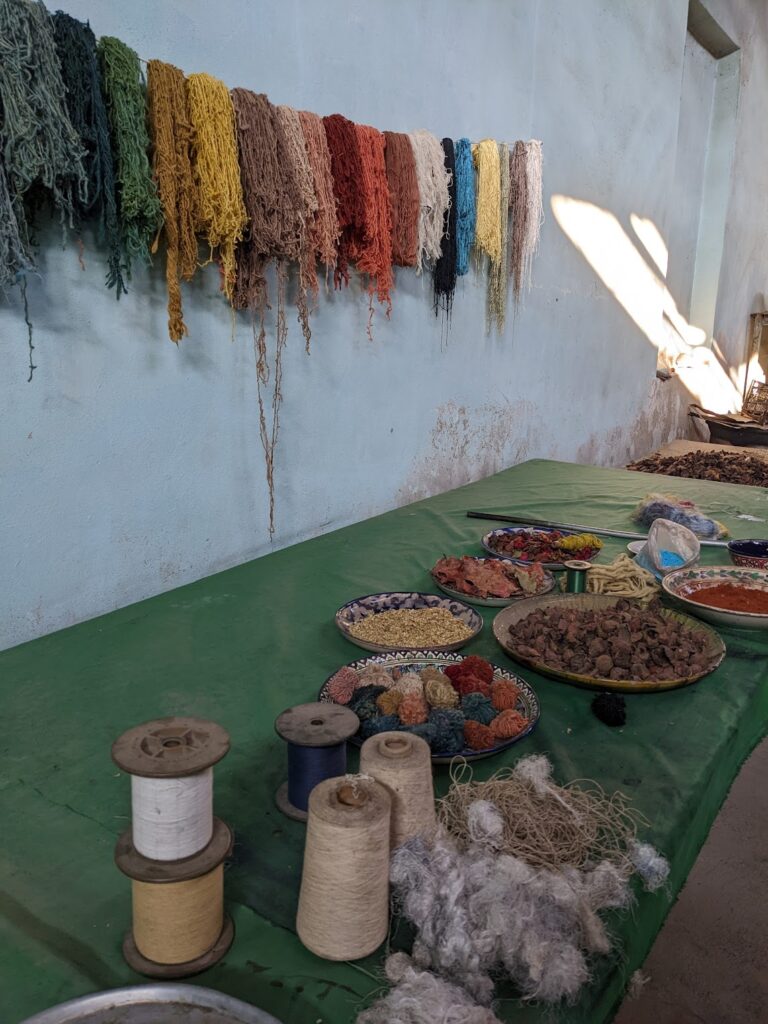
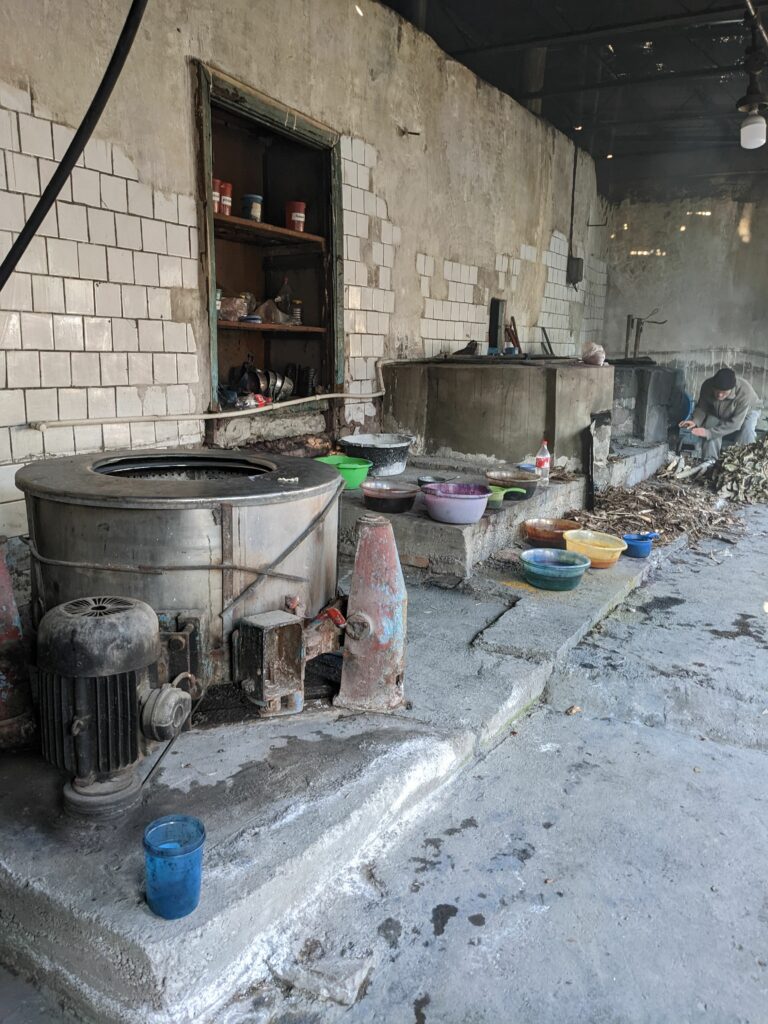
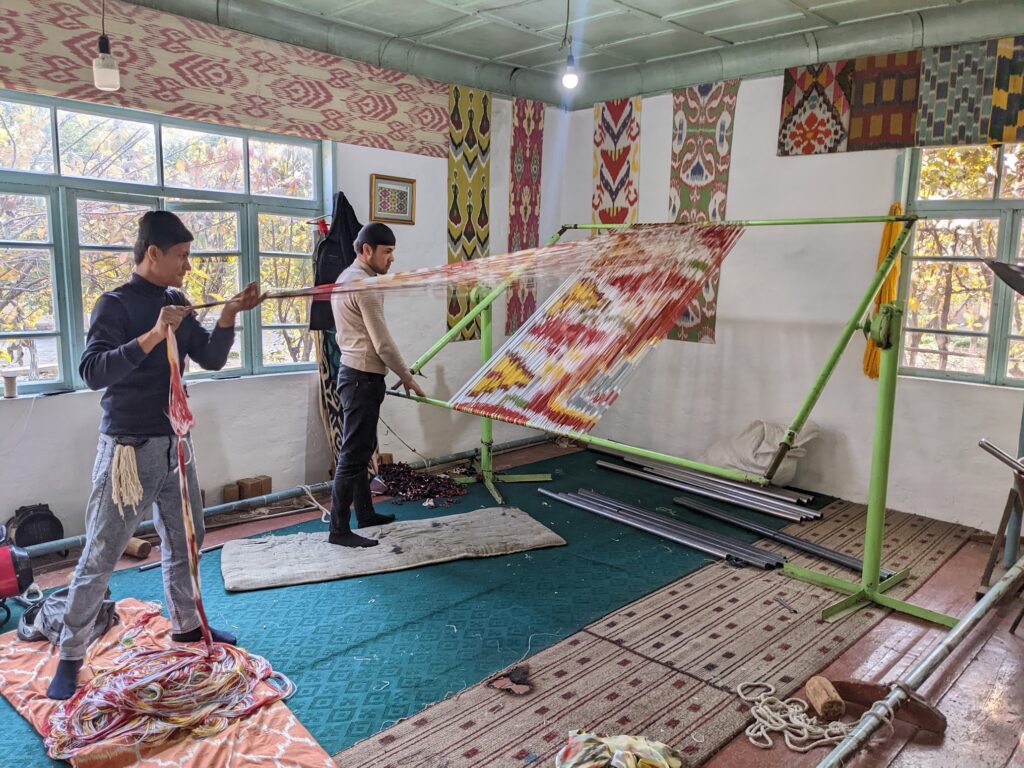
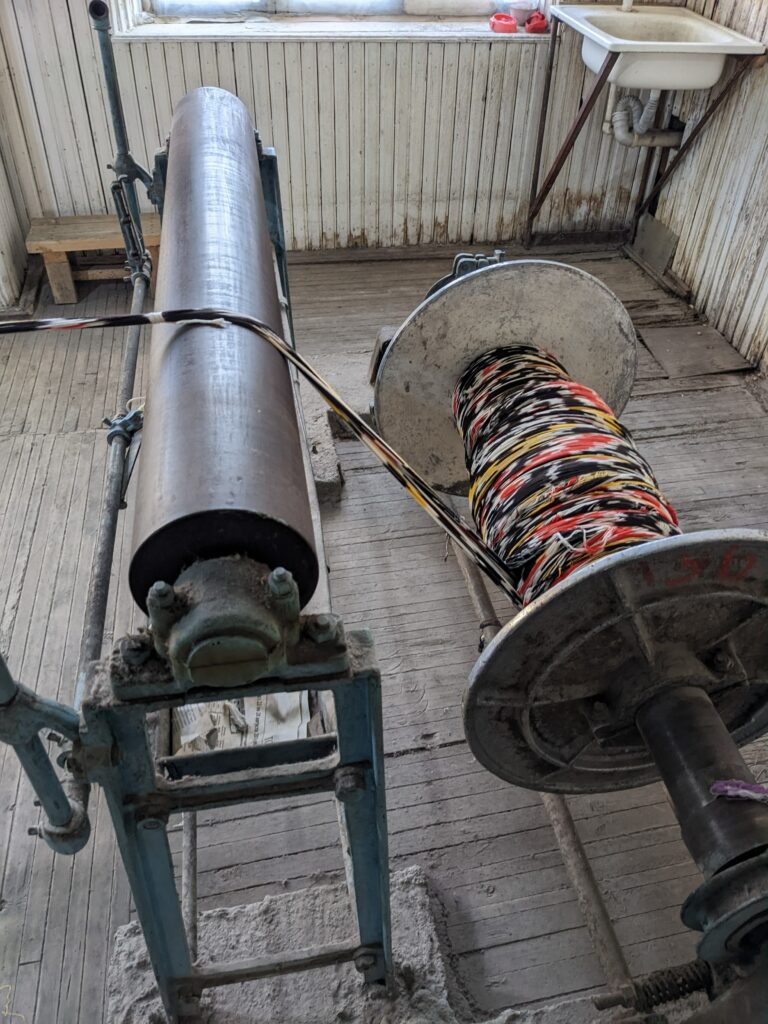
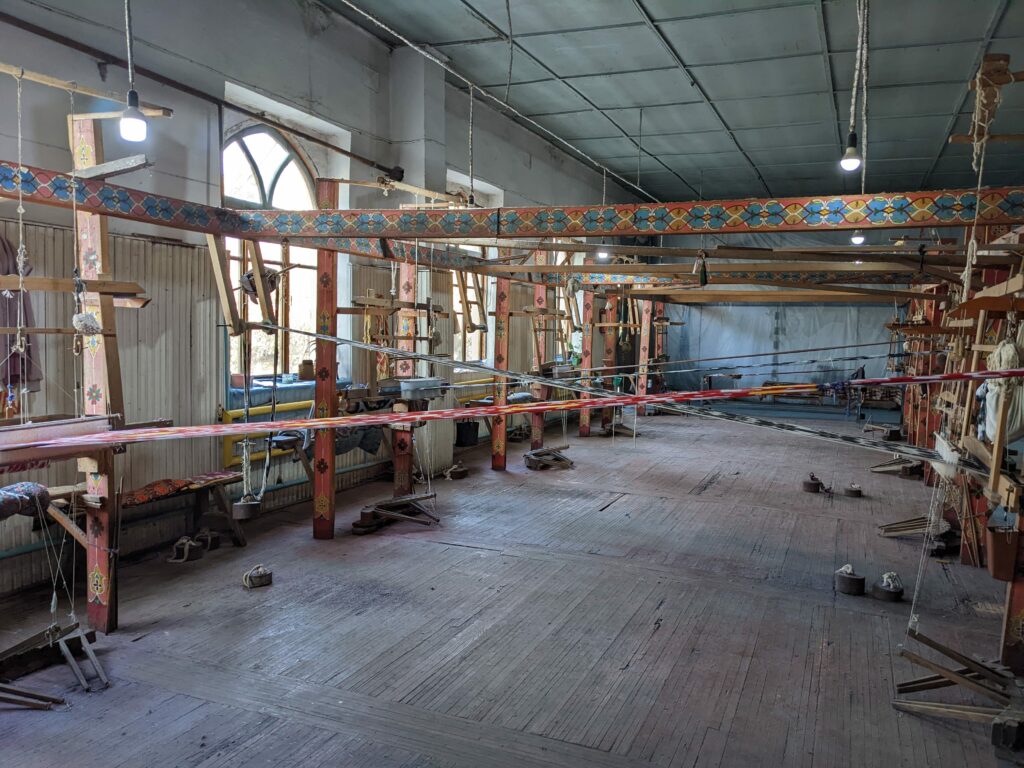
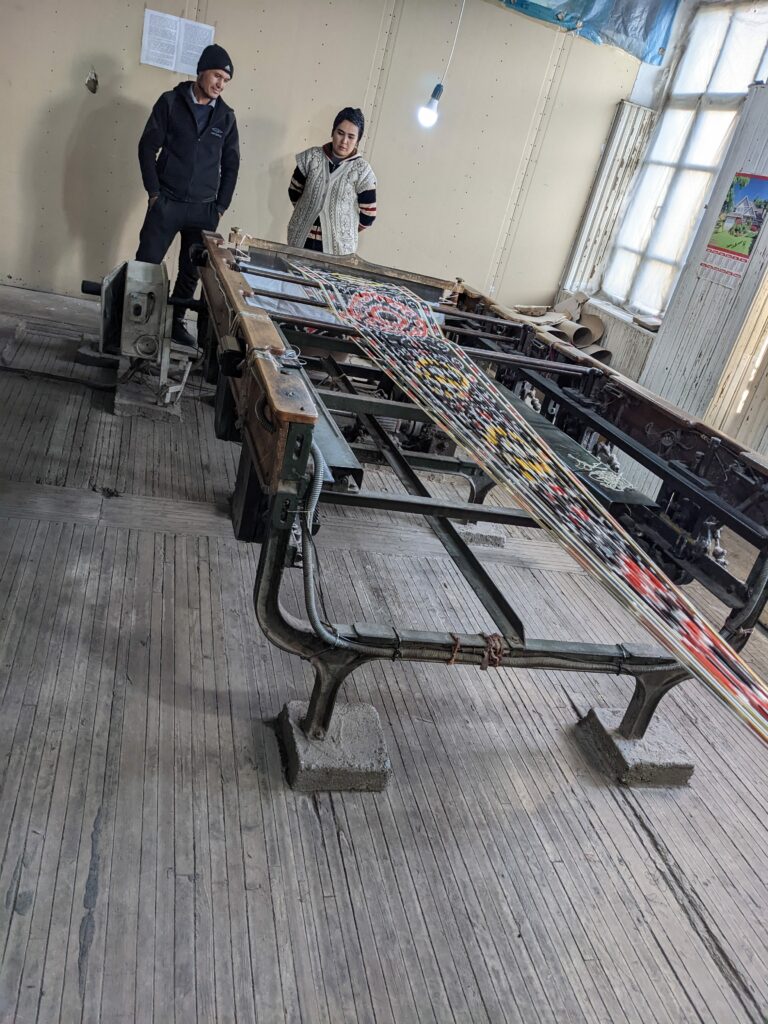
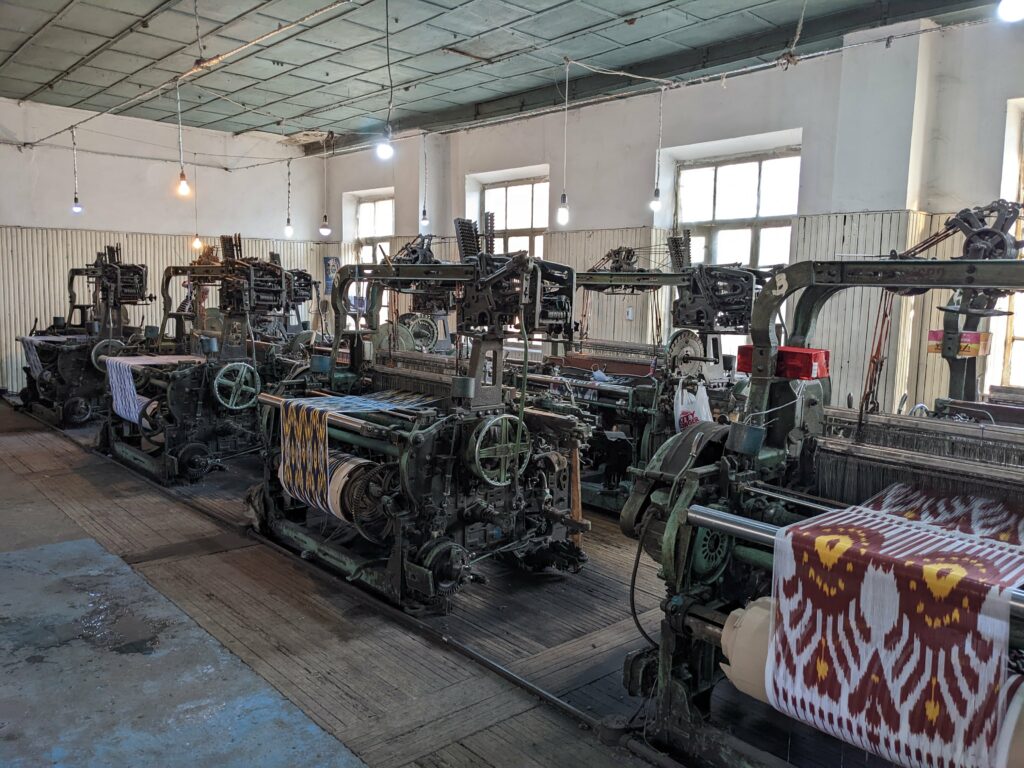
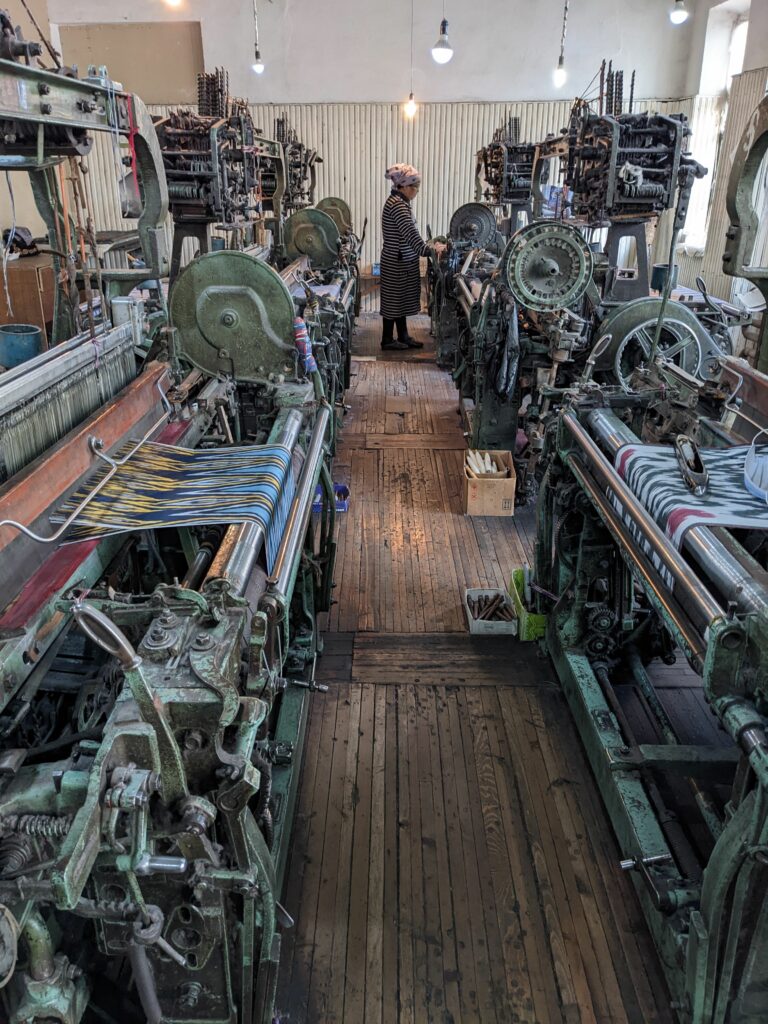
Hi Sara and Oli
I’m loving your adventures in Uzbekistan! We visited nearly all the places that you did. I think we were protected from a lot of the problems that Uzbekistan throws up because we had a very good guide. I remember several time him smoothing things over for us especially in Nukus where he had a heated argument with a politician’s bodyguard! Like you we met some lovely people in Uzbekistan so you have to bear that in mind
Yes we really did meet lots of nice people and I think any issues we had just reflect how recently Uzbekistan has started to welcome visitors. It sounds like even a couple of years ago would have been a much more challenging experience. An argument with a politician’s bodyguard sounds a bit intense, though!